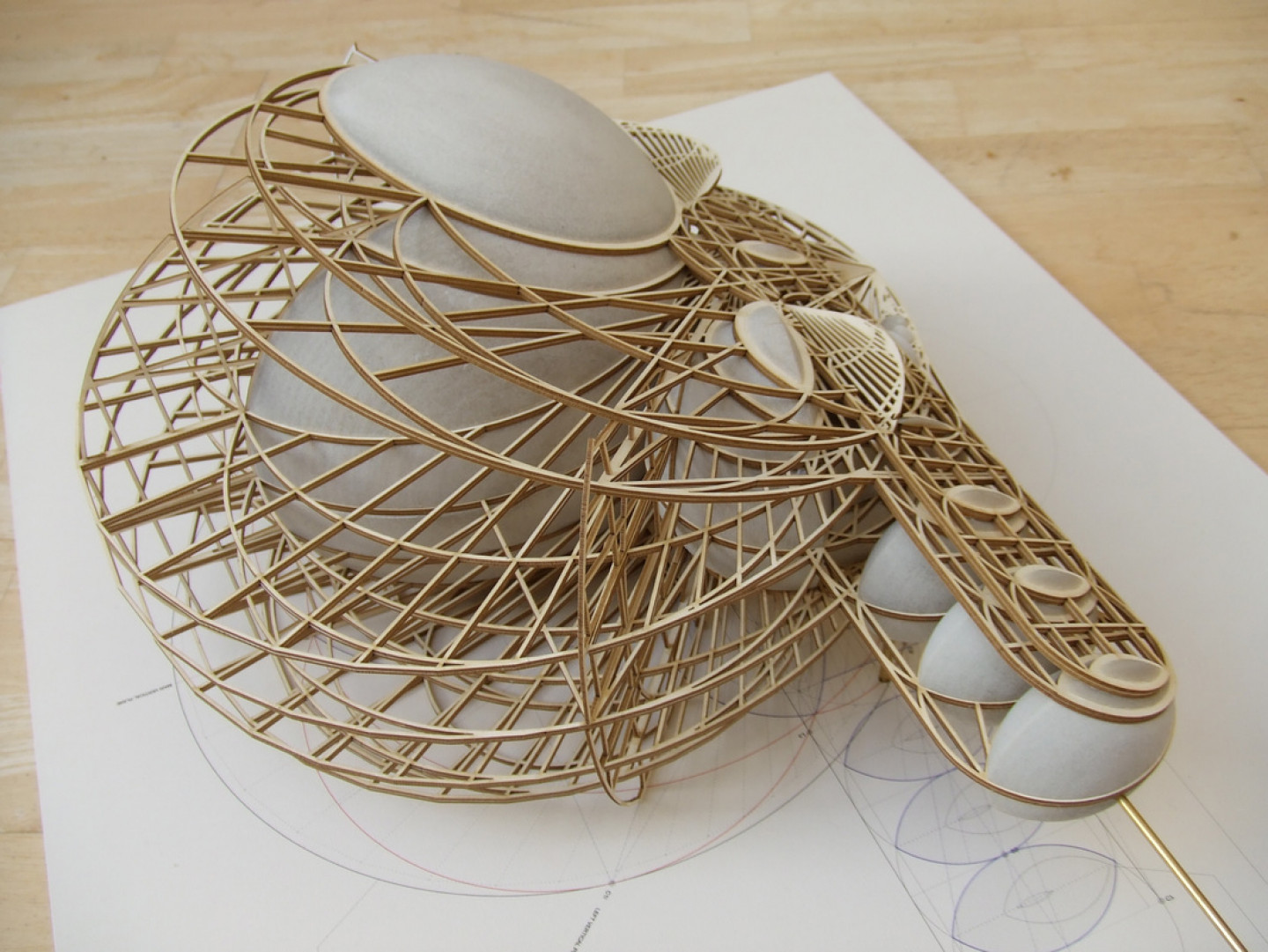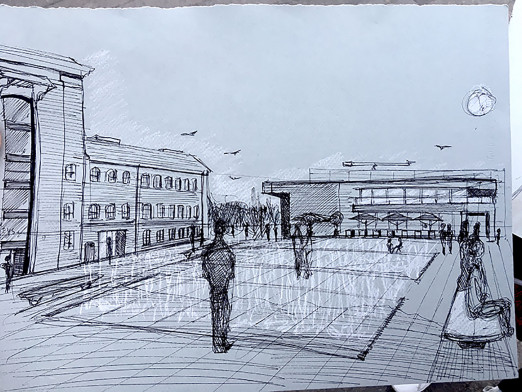I first saw John Pickering’s work in 2002. With the power of Da Vinci’s Vitruvian Man and the mystery of hieroglyphics waiting to be decoded, the models created by Pickering over the previous 30 years presented themselves as artefacts that would reveal a greater truth to us. John’s work was way ahead of its time; he was a pioneer of digital construction using mathematics and complex geometry to produce sculptures that predate the work on show in the Building Centre’s Digital Turn exhibition by many years.
After an artistic career founded on figurative work, having trained in classical sculpture, he became fascinated in the 1970’s with projective geometry, inversion and fractals. He was strongly influenced by seminal texts such as ‘Geometry and the Imagination’ by D. Hilbert and S. Cohn-Vossen as well as taking inspiration from French Gothic cathedrals, spacecraft and the music of Stockhausen.
Pickering was specifically inspired by the inversion principle – MP.MQ=MR2 – and wrote that “the inversion principle can be used for transforming one thing into another, for both large and small-scale form. It produces a certain skeletal consistency but is not the rigid system one might suppose, as it allows the artist imaginative choices and flexibility, enabling personality to be imposed as part of the process. Logic is nothing to be afraid of when applied to art; it is simply part of human thought, spatial relations, balance and the laws of nature.”
A show commissioned in 2002 during my tenure at the Architectural Association displayed unseen works to a captivated audience. Although Pickering’s works appear primarily architectural their origins are mathematical. He calculated forms by analytic means, beginning with two-dimensional profiles. The process that resulted in the definition of the form consisted of calculating and cutting out two-dimensional profiles before piecing them together in a three-dimensional object. In an age predating complex computer modelling software Pickering employed hundreds of handwritten calculations, manipulating the mathematics to produce the work he had imagined.
On meeting Pickering it became clear that the process of making his work had taken both intellectual and physical courage as he had suffered from rheumatoid arthritis from his early twenties, leaving him in constant pain.
Pickering’s incredible work was recognised by the architectural community and collaborations followed. Notably with the Fosters Special Modelling Group for an exhibition at Kettles Yard in 2007, and a collaboration (that started in 2002 and was to last for the rest of his life) with the architect George Legendre.
It is often with the passing of time that genius reveals itself and when I look at Pickering’s work I am increasingly stunned by its prescience; work so ahead of its time it now seems entirely at home in our digital world.
Vanessa Norwood, creative director of the Building Centre.


